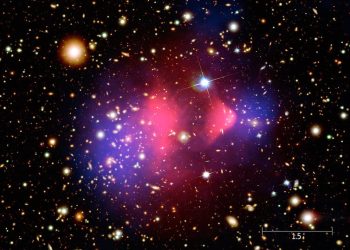The discovery of gravitational waves marked a turning point in astronomy, allowing us to detect and observe the most extreme events in the cosmos, such as the merging of black holes and neutron stars. This remarkable breakthrough not only expanded our understanding of space but also opened a new frontier in studying the universe’s distant past. With next-generation gravitational wave observatories on the horizon, scientists are preparing to delve even deeper, exploring the very first black hole mergers in the universe’s early history.
In 2016, the scientific community celebrated a monumental achievement. Researchers at the Laser Interferometer Gravitational-Wave Observatory (LIGO) made the first confirmed detection of gravitational waves, ripples in spacetime created by massive objects colliding. This discovery was the first of its kind, allowing astronomers to study violent cosmic events millions or even billions of light-years away.
Since then, observatories like LIGO, Virgo, and KAGRA have detected more than 100 such events. These include the merging of neutron stars and black holes, providing invaluable data on phenomena that were previously impossible to observe directly. But while these events have offered new insights into the universe, the most exciting discoveries are yet to come.
Unlocking the Secrets of the Universe’s First Stars
Recent studies have proposed using gravitational waves to explore an even more ancient chapter of the cosmos—specifically, the formation of the first stars, known as Population III stars. These stars formed around 100 to 500 million years after the Big Bang, during an era often called the “Cosmic Dawn.” They were massive, with low metallicity, and had short lifespans, often ending in supernovae or collapsing into black holes.
As these early black holes merged, they would have created gravitational waves. With future observatories, such as the highly anticipated Einstein Telescope, scientists hope to detect these ancient signals and gain insight into the conditions that existed during the birth of the first galaxies and black holes. Understanding these early black hole mergers could provide clues about the formation of supermassive black holes that exist at the centers of galaxies, including our own Milky Way.
The current generation of gravitational wave detectors, while groundbreaking, has limitations when it comes to detecting events from the distant past. This is where the Einstein Telescope comes into play. Designed to be far more sensitive than its predecessors, this new observatory will be capable of detecting black hole mergers from the Cosmic Dark Ages, a period before light from the first stars had illuminated the universe.
According to a study led by Boyuan Liu, a postdoctoral researcher at Heidelberg University, the Einstein Telescope could detect as many as 1,400 mergers of Population III black holes each year. This unprecedented ability to observe early black hole collisions will help astronomers piece together how the first stars formed and evolved, and how black holes played a role in shaping the structure of the universe as we know it today.
One of the most intriguing mysteries in modern astrophysics is the origin of supermassive black holes (SMBHs). These colossal objects, which can be billions of times more massive than our Sun, are found at the centers of most large galaxies. While we know that these black holes play a crucial role in galaxy formation and evolution, how they formed in the early universe remains a mystery.
By studying the gravitational waves emitted by early black hole mergers, scientists hope to better understand how some of these black holes grew to such massive sizes. Population III stars, which had lifespans of only a few million years, are thought to have left behind the first black holes, which eventually merged and grew larger. These black holes likely formed the seeds of the SMBHs we observe today.
A Glimpse into the Future of Gravitational Wave Astronomy
The potential for future discoveries through gravitational wave astronomy is staggering. As technology advances, observatories like the Einstein Telescope and the planned Laser Interferometer Space Antenna (LISA) will allow us to explore regions of the universe that are currently beyond our reach. These instruments will not only detect more black hole mergers but also probe the very fabric of spacetime, helping us understand fundamental forces like gravity and the behavior of dark matter.
The detection of gravitational waves from the early universe will also shed light on the Cosmic Dark Ages, a period that remains largely unexplored. By tracing the formation of the first stars and black holes, scientists will be able to construct a more complete picture of how the universe transitioned from a dark, starless expanse into the vibrant, galaxy-filled cosmos we see today.
As we look to the future of gravitational wave research, one thing is clear: we are on the brink of a new era in astrophysics. The ability to detect and study the universe’s earliest black hole mergers will not only provide insights into the origins of stars and galaxies but will also deepen our understanding of the fundamental forces that govern the cosmos.
The Einstein Telescope, LISA, and other next-generation observatories are poised to revolutionize our knowledge of the universe, offering us the chance to explore the mysteries of the Cosmic Dark Ages and the first black holes. With each new discovery, we come one step closer to unraveling the origins of the universe itself.











